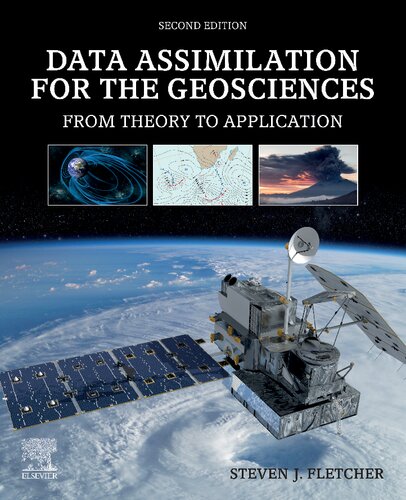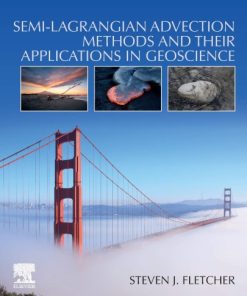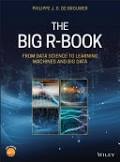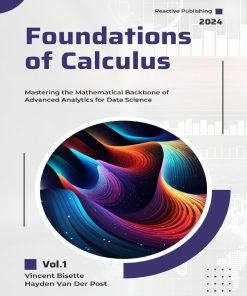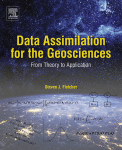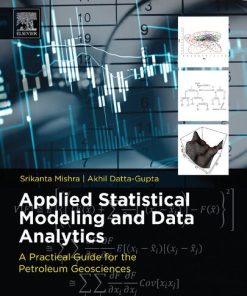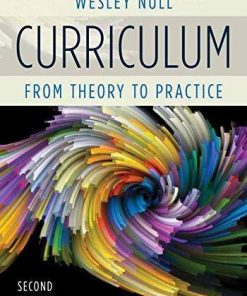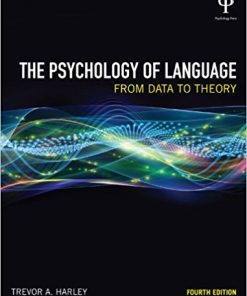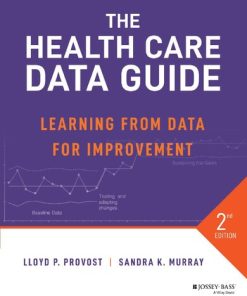(EBOOK PDF)Data Assimilation for the Geosciences From Theory to Application 2nd Edition by Steven Fletcher 9780323972536 0323972535 full chapters
$50.00 Original price was: $50.00.$25.00Current price is: $25.00.
Data Assimilation for the Geosciences From Theory to Application 2nd Edition by Steven Fletcher – Ebook PDF Instant Download/Delivery: 9780323972536, 0323972535
Full download Data Assimilation for the Geosciences From Theory to Application 2nd Edition after payment
Product details:
• ISBN 10:0323972535
• ISBN 13:9780323972536
• Author: Steven Fletcher
Data Assimilation for the Geosciences
From Theory to Application
Data Assimilation for the Geosciences: From Theory to Application, Second Edition brings together all of the mathematical and statistical background knowledge needed to formulate data assimilation systems into one place. It includes practical exercises enabling readers to apply theory in both a theoretical formulation as well as teach them how to code the theory with toy problems to verify their understanding. It also demonstrates how data assimilation systems are implemented in larger scale fluid dynamical problems related to land surface, the atmosphere, ocean and other geophysical situations. The second edition of Data Assimilation for the Geosciences has been revised with up to date research that is going on in data assimilation, as well as how to apply the techniques. The new edition features an introduction of how machine learning and artificial intelligence are interfacing and aiding data assimilation. In addition to appealing to students and researchers across the geosciences, this now also appeals to new students and scientists in the field of data assimilation as it will now have even more information on the techniques, research, and applications, consolidated into one source.
Includes practical exercises and solutions enabling readers to apply theory in both a theoretical formulation as well as enabling them to code theory
Provides the mathematical and statistical background knowledge needed to formulate data assimilation systems into one place
New to this edition: covers new topics such as Observing System Experiments (OSE) and Observing System Simulation Experiments; and expanded approaches for machine learning and artificial intelligence
Data Assimilation for the Geosciences From Theory to Application 2nd Table of contents:
Chapter 1: Introduction
Abstract
Bibliography
Chapter 2: Overview of Linear Algebra
Abstract
2.1. Properties of Matrices
2.2. Matrix and Vector Norms
2.3. Eigenvalues and Eigenvectors
2.4. Matrix Decompositions
2.5. Sherman-Morrison-Woodbury Formula
2.6. Summary
Bibliography
Chapter 3: Univariate Distribution Theory
Abstract
3.1. Random Variables
3.2. Discrete Probability Theory
3.3. Continuous Probability Theory
3.4. Discrete Distribution Theory
3.5. Expectation and Variance of Discrete Random Variables
3.6. Moments and Moment-Generating Functions
3.7. Continuous Distribution Theory
3.8. Lognormal Distribution
3.9. Reverse Lognormal Distribution
3.10. Exponential Distribution
3.11. Gamma Distribution
3.12. Inverse Gamma Distribution
3.13. Beta Distribution
3.14. Chi-Squared (χ2) Distribution
3.15. Rayleigh Distribution
3.16. Weibull Distribution
3.17. Gumbel Distribution
3.18. Summary of the Descriptive Statistics, Moment-Generating Functions, and Moments for the Univariate Distribution
3.19. Summary
Bibliography
Chapter 4: Multivariate Distribution Theory
Abstract
4.1. Descriptive Statistics for Multivariate Density Functions
4.2. Gaussian Distribution
4.3. Lognormal Distribution
4.4. Mixed Gaussian-Lognormal Distribution
4.5. Multivariate Mixed Gaussian-Lognormal Distribution
4.6. Reverse Lognormal Distribution
4.7. Gamma Distribution
4.8. Summary
Bibliography
Chapter 5: Introduction to Calculus of Variation
Abstract
5.1. Examples of Calculus of Variation Problems
5.2. Solving Calculus of Variation Problems
5.3. Functional With Higher-Order Derivatives
5.4. Three-Dimensional Problems
5.5. Functionals With Constraints
5.6. Functional With Extremals That Are Functions of Two or More Variables
5.7. Summary
Chapter 6: Introduction to Control Theory
Abstract
6.1. The Control Problem
6.2. The Uncontrolled Problem
6.3. The Controlled Problem
6.4. Observability
6.5. Duality
6.6. Stability
6.7. Feedback
6.8. Summary
Bibliography
Chapter 7: Optimal Control Theory
Abstract
7.1. Optimizing Scalar Control Problems
7.2. Multivariate Case
7.3. Autonomous (Time-Invariant) Problem
7.4. Extension to General Boundary Conditions
7.5. Free End Time Optimal Control Problems
7.6. Piecewise Smooth Calculus of Variation Problems
7.7. Maximization of Constrained Control Problems
7.8. Two Classical Optimal Control Problems
7.9. Summary
Chapter 8: Numerical Solutions to Initial Value Problems
Abstract
8.1. Local and Truncation Errors
8.2. Linear Multistep Methods
8.3. Stability
8.4. Convergence
8.5. Runge-Kutta Schemes
8.6. Numerical Solutions to Initial Value Partial Differential Equations
8.7. Wave Equation
8.8. Courant Friedrichs Lewy Condition
8.9. Summary
Chapter 9: Numerical Solutions to Boundary Value Problems
Abstract
9.1. Types of Differential Equations
9.2. Shooting Methods
9.3. Finite Difference Methods
9.4. Self-Adjoint Problems
9.5. Error Analysis
9.6. Partial Differential Equations
9.7. Self-Adjoint Problem in Two Dimensions
9.8. Periodic Boundary Conditions
9.9. Summary
Chapter 10: Introduction to Semi-Lagrangian Advection Methods
Abstract
10.1. History of Semi-Lagrangian Approaches
10.2. Derivation of Semi-Lagrangian Approach
10.3. Interpolation Polynomials
10.4. Stability of Semi-Lagrangian Schemes
10.5. Consistency Analysis of Semi-Lagrangian Schemes
10.6. Semi-Lagrangian Schemes for Non-Constant Advection Velocity
10.7. Semi-Lagrangian Scheme for Non-Zero Forcing
10.8. Example: 2D Quasi-Geostrophic Potential Vorticity (Eady Model)
10.9. Summary
Bibliography
Chapter 11: Introduction to Finite Element Modeling
Abstract
11.1. Solving the Boundary Value Problem
11.2. Weak Solutions of Differential Equation
11.3. Accuracy of the Finite Element Approach
11.4. Pin Tong
11.5. Finite Element Basis Functions
11.6. Coding Finite Element Approximations for Triangle Elements
11.7. Isoparametric Elements
11.8. Summary
Bibliography
Chapter 12: Numerical Modeling on the Sphere
Abstract
12.1. Vector Operators in Spherical Coordinates
12.2. Spherical Vector Derivative Operators
12.3. Finite Differencing on the Sphere
12.4. Introduction to Fourier Analysis
12.5. Spectral Modeling
12.6. Summary
Bibliography
Chapter 13: Tangent Linear Modeling and Adjoints
Abstract
13.1. Additive Tangent Linear and Adjoint Modeling Theory
13.2. Multiplicative Tangent Linear and Adjoint Modeling Theory
13.3. Examples of Adjoint Derivations
13.4. Perturbation Forecast Modeling
13.5. Adjoint Sensitivities
13.6. Singular Vectors
13.7. Summary
Bibliography
Chapter 14: Observations
Abstract
14.1. Conventional Observations
14.2. Remote Sensing
14.3. Quality Control
14.4. Summary
Bibliography
Chapter 15: Non-Variational Sequential Data Assimilation Methods
Abstract
15.1. Direct Insertion
15.2. Nudging
15.3. Successive Correction
15.4. Linear and Nonlinear Least Squares
15.5. Regression
15.6. Optimal (Optimum) Interpolation/Statistical Interpolation/Analysis Correction
15.7. Summary
Bibliography
Chapter 16: Variational Data Assimilation
Abstract
16.1. Sasaki and the Strong and Weak Constraints
16.2. Three-Dimensional Data Assimilation
16.3. Four-Dimensional Data Assimilation
16.4. Incremental VAR
16.5. Weak Constraint—Model Error 4D VAR
16.6. Observational Errors
16.7. Forecast Sensitivity Observation Impact (FSOI)
16.8. Saddle Point 4D VAR
16.9. Rapid Update Cycling (RUC)
16.10. Regularization
16.11. 4D VAR as an Optimal Control Problem
16.12. Summary
Bibliography
Chapter 17: Subcomponents of Variational Data Assimilation
Abstract
17.1. Balance
17.2. Control Variable Transforms
17.3. Background Error Covariance Modeling
17.4. Preconditioning
17.5. Minimization Algorithms
17.6. Performance Metrics
17.7. Summary
Bibliography
Chapter 18: Observation Space Variational Data Assimilation Methods
Abstract
18.1. Derivation of Observation Space-Based 3D VAR
18.2. 4D VAR in Observation Space
18.3. Duality of the VAR and PSAS Systems
18.4. Summary
Bibliography
Chapter 19: Kalman Filter and Smoother
Abstract
19.1. Derivation of the Kalman Filter
19.2. Kalman Filter Derivation From a Statistical Approach
19.3. Extended Kalman Filter
19.4. Square Root Kalman Filter
19.5. Smoother
19.6. Properties and Equivalencies of the Kalman Filter and Smoother
19.7. Summary
Bibliography
Chapter 20: Ensemble-Based Data Assimilation
Abstract
20.1. Stochastic Dynamical Modeling
20.2. Ensemble Kalman Filter
20.3. Ensemble Square Root Filters
20.4. Ensemble and Local Ensemble Transform Kalman Filter
20.5. Maximum Likelihood Ensemble Filter
20.6. Hybrid Ensemble and Variational Data Assimilation Methods
20.7. NDEnVAR
20.8. Scale Dependent Background Error Covariance Localization
20.9. Ensemble Kalman Smoother
20.10. Ensemble Sensitivity
20.11. Ensemble Forecast Sensitivity to Observations (EFSO)
20.12. Local Ensemble Tangent Linear Model (LETLM)
20.13. Summary
Bibliography
Chapter 21: Non-Gaussian Based Data Assimilation
Abstract
21.1. Error Definitions
21.2. Full Field Lognormal 3D VAR
21.3. Logarithmic Transforms
21.4. Mixed Gaussian-Lognormal 3D VAR
21.5. Lognormal Calculus of Variation-Based 4D VAR
21.6. Bayesian-Based 4D VAR
21.7. Bayesian Networks Formulation of Weak Constraint/Model Error 4D VAR
21.8. Results of the Lorenz 1963 Model for 4D VAR
21.9. Incremental Lognormal and Mixed 3D and 4D VAR
21.10. Reverse Lognormal Variational Data Assimilation
21.11. Lognormal and Mixed Gaussian-Lognormal Kalman Filters
21.12. Gaussian Anamorphosis
21.13. Gamma-Inverse-Gamma-Gaussian (GIGG) Filter
21.14. Regions of Optimality for Lognormal Descriptive Statistics
21.15. Summary
Bibliography
Chapter 22: Markov Chain Monte Carlo, Particle Filters, Particle Smoothers, and Sigma Point Filters
Abstract
22.1. Markov Chain Monte Carlo Methods
22.2. Particle Filters
22.3. Local Particle Filter
22.4. Particle Smoother
22.5. Sigma Point Kalman Filters (SPKF)
22.6. Summary
Bibliography
Chapter 23: Lagrangian Data Assimilation
Abstract
23.1. Extended Kalman Filter Approach
23.2. Variational Lagrangian Data Assimilation
23.3. Lagrangian Ensemble Kalman Filter
23.4. Localized Ensemble Transform Kalman Filter Lagrangian Data Assimilation (LETKF-LaDA)
23.5. Hybrid Particle Filters and Ensemble Kalman Filters Lagrangian Data Assimilation
23.6. Summary
Bibliography
Chapter 24: Artificial Intelligence and Data Assimilation
Abstract
24.1. Helpful Definitions
24.2. Introduction to Machine Learning Algorithms
24.3. Introduction to Deep Learning
24.4. Applications of Artificial Intelligence With Data Assimilation
24.5. Summary
Bibliography
Chapter 25: Applications of Data Assimilation in the Geosciences
Abstract
25.1. Atmospheric Science
25.2. Joint Effort for Data Assimilation Integration (JEDI)
25.3. Observing-System Experiments (OSE)
25.4. Observing System Simulation Experiments (OSSE)
25.5. Oceans
25.6. Hydrological Applications
25.7. Coupled Data Assimilation
25.8. Reanalysis
25.9. Ionospheric Data Assimilation
25.10. Renewable Energy Data Application
25.11. Earthquakes
25.12. Oil and Natural Gas
25.13. Biogeoscience Application of Data Assimilation
25.14. Other Applications of Data Assimilation
25.15. Summary
Bibliography
Chapter 26: Solutions to Select Exercise
Chapter 2
Chapter 3
Chapter 5
Chapter 6
Chapter 7
Chapter 8
Chapter 9
Bibliography
Bibliography
Index
People also search for Data Assimilation for the Geosciences From Theory to Application 2nd:
data assimilation for the geosciences: from
data assimilation for the geosciences from theory to application
what is data assimilation
data assimilation methods
data assimilation techniques
Tags:
Data Assimilation,the Geosciences,Steven Fletcher
You may also like…
Computers - Applications & Software
Politics & Philosophy - General & Miscellaneous Philosophy
Mathematics - Mathematical Theory
Earth Sciences - Geology
Uncategorized
Uncategorized


